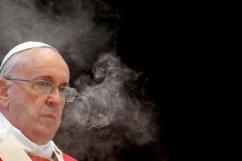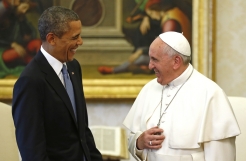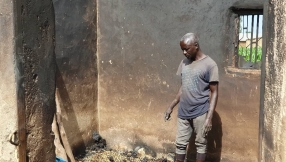Amid seemingly endless reports of the decline of the Church, it's encouraging to see a study released yesterday showing that the number of Catholics around the world increased by 57 per cent between 1980 and 2012.
Unfortunately, it's not all good news. The research, conducted by the Center for Applied Research in the Apostate (CARA) at Georgetown University, Washington DC, shows an increase in the number of Catholics, but a decline in the number of priests, and in the number of Catholics receiving the sacraments in certain parts of the world.
"The Church is undergoing a transformation and realigning," Dr Mark Gray, director of CARA Catholic Polls, who co-authored the report, told Christian Today. "There are places where the Church is growing, and growing strongly, and there are not enough parishes and lots of priests, and then there are places where the population is waning and there are lots of parishes and too few priests."
There are now 1.2 billion Catholics in the world, up from 7.83 million in 1980, but this growth is not evenly spread. There has been a dramatic increase in the number of Catholics in Africa, up 238 per cent since 1980, compared to just six per cent growth in Europe. In Asia, the Church has grown by 115 per cent and North and South America (grouped together as the Americas) there has been a 56 per cent increase during the same period.
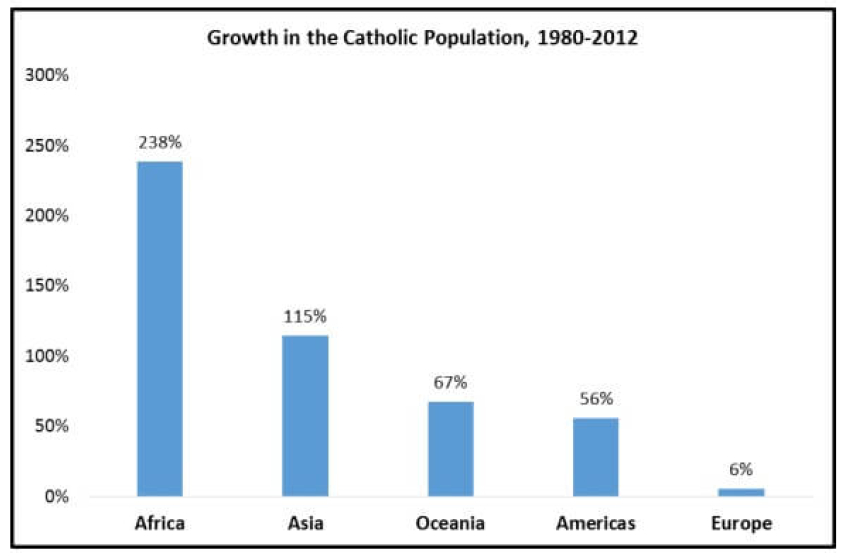
This disparity is largely due to the population growth in Africa and Asia, not as a result of dramatically high conversion rates through evangelism on these continents. It means, therefore, that as birth rates inevitably decline in the coming decades, the continued growth of the Church at this level is not guaranteed.
As a proportion of the global population, the Catholic community has remained fairly static at about 17.5 per cent for the past 50 years. Even with considerable growth, Catholics now still only represent 3.2 per cent of the population in Asia and 18.6 per cent in Africa, whereas in the Americas they continue to make up 60 per cent of the population, and 40 per cent in Europe.
CARA projects that the number of Catholics will continue to grow, but not at quite the same levels as seen in the last 35 years. They estimate that the Catholic population will increase by another 372 million by 2050, or 29 per cent.
A concern for the future is that while the size of the flock has grown, overall there has been a 17 per cent decline in the number of priests. In total in 2012 there were 393,053 priests for the world's 1.2 billion Catholics.
Both priests and parishes (church buildings) are unevenly distributed globally, with higher numbers in the regions seeing least growth. Europe has only 23 per cent of the global Catholic population, but has more parishes than the rest of the world combined (55 per cent) – even though the number of parishes in Europe has decreased by 12 per cent. Regular church attendance is higher in Africa too, with about 70 per cent of Catholics attending Mass weekly, compared to 20 per cent in Europe.
Europe also has one diocesan priest for every 2,597 Catholics compared one to 7,223 in Africa. But while Africa and Asia have a healthy number of men becoming priests (numbers have more than doubled on both continents), Europe and the Americas struggle to keep up with the number lost through death or defection each year.
"A growing phenomenon within the Church is the use of African and Asian priests in the United States, Europe, and elsewhere where there are too few native priests to staff parishes," the report said.
As a whole, the Church will have to respond to the geographical shift of the Catholic population. Gray said he thought Pope Francis' choice of cardinals with a more global focus was one indication that the Church was responding.
But he said it's a big challenge for the Church to reorient the focus of its resources, especially given the "feudal" structure of the Church. "I think a lot of people have in their heads an image of a Pope in a big room with a map and he says 'Close a parish there, open a school there'. It's just not how the Church works. It's really at a local level."
Beneath the overall picture of growth, the number of Catholics receiving the sacraments has declined, particularly in Europe and North America. The number of Church marriages in Europe has gone from 1.5 million in 1980 to around 650,000 in 2012, and the number of infant baptisms has also decreased by 1.5 million.
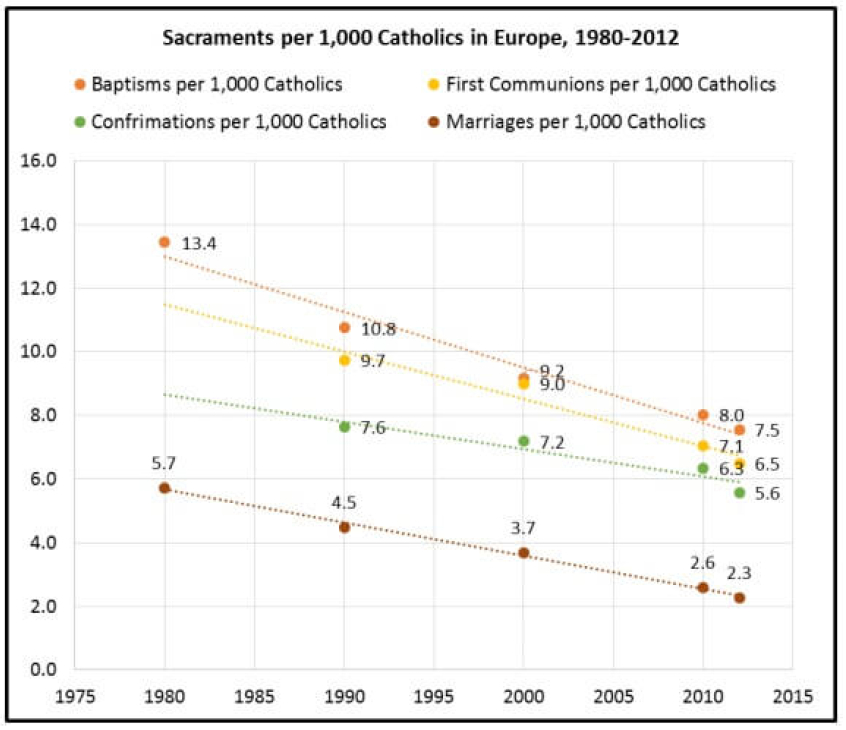
There has been a decline in the number of Catholics receiving the sacraments in Africa and Asia relative to the size of the Catholic population, although this hides the fact that the population growth has in part been driven by increased life expectancy. "You only get baptised once, you only get married in the Church once," Gray said. "Some of this is explained by a different demography of the global population, which is a really good thing – people are living longer, living healthier lives than in the 20th century."
He added that the decline in infant baptisms worldwide is generally consistent with the decline in the fertility rate. But without enough churches for the size of the Catholic population, being unable to get to a church is another reason for lower than expected sacramental activity in Africa, the report suggested.
It does, however, indicate that the whole church – including in the South – "faces a global 21st century problem of keeping Catholics engaged with parish and sacramental life."










